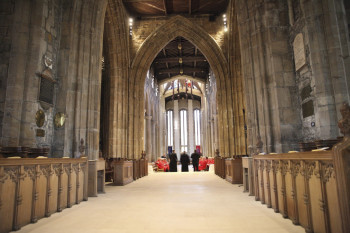Why our historic churches have an important role to play now and in the future
Britain’s historic church buildings characterise our landscape and bear witness to centuries of life and death in our cities, towns and villages. Few would deny their heritage and architectural importance but what about their role in our modern society?
We are fortunate enough to have been involved in several major ecclesiastical restoration projects and these have given us an insight into the 21st century church and its community.
Many cathedrals and churches have adapted to survive in a way that would impress professional business turnaround specialists. They are no longer merely a place to worship on Sundays. Their contribution to the community in which they reside is rich and varied. They offer counselling services, provide a meeting place for societies and groups and a venue for the arts. They hold exhibitions, public meetings, forums and concerts. They enlist and train volunteers, they are a focus for local schools and clubs and some even host community shops and libraries.
The cathedral and church teams that we have worked with recognise their role in the wider community and this openness to adapt and change has shaped their restoration agenda. They recognise that they are serving a diverse population and that their buildings will be used in many different ways, by many different people. Versatility is key.
Our experience has shown us that there are some inspirational people working within our religious communities who are driving things forward. They listen, learn and collaborate. They appreciate the architectural significance of the buildings in which they work or volunteer without letting it define or limit their vision.
They also understand that any church restoration and renewal project must be planned and executed sensitively. This is a religious building after all and its primary purpose will always be to provide a place for worship and prayer.
A good church renovation project will bring things up to date in a way that enhances the structure’s character and architectural heritage and doesn’t detract from its solemn religious role.
There is no doubt that churches face challenging times as they meet the cost of upkeep and the necessity to adapt their space and resources for a new generation. What’s uplifting is the fact that they are embracing change.

